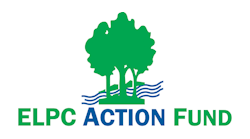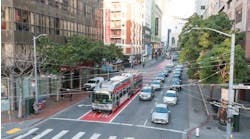The Environmental Law & Policy Center Action Fund and passenger train advocates launched an advertising campaign to remind people what Wisconsin lost when Gov. Scott Walker rejected $810 million in federal grant funds to build high-speed passenger rail from Milwaukee to Madison.
“Illinois and Michigan are gaining high-speed rail jobs and improving transportation for people across their states,” said Howard Learner, executive director of the Environmental Law & Policy Center (ELPC). “It’s time for Wisconsin to get modern higher-speed rail back on track in ways that connect the state’s economy.”
As part of the public awareness campaign, the ELPC Action Fund is commissioning a series of billboards and posters in areas where high-speed rail lines should be up and running. Losing high-speed rail funding cost Wisconsin jobs and economic growth.
Minnesota is joining the high-speed bandwagon. Minnesota is home to 20 Fortune 500 companies and job-rate growth in the Twin Cities metropolitan area is expected to grow by 34 percent by 2040. With that much economic growth, Minnesotans recognize the value of investing in high-speed rail. Recent public meetings about a high-speed train between Minneapolis and Rochester underscore the point that Wisconsin is missing out when it comes to rail.
Since the 1990s, Wisconsin state officials had been working to connect Milwaukee and Madison with high-speed rail and by 2010 had come closer than ever to succeeding when the state was awarded $810 million in federal grant funds. The route would have extended Amtrak’s existing Milwaukee-to-Chicago Hiawatha service, from downtown Milwaukee to downtown Madison, and then continuing to La Crosse and St. Paul.
Brookfield, Oconomowoc and Watertown were considered for train stations, and local officials in those towns wanted high-speed rail to fuel their local economies.
All Aboard Wisconsin, an alliance of organizations and individuals promoting passenger rail, will be doing their own public outreach with their own messages to get people talking.
“Madison was to have been just the first step in a wide expansion of passenger train service, and each community served by these trains would have been connected to a thousand other places served by Amtrak’s national rail network and Via Rail in Canada,” said Mike McCoy, president of All Aboard Wisconsin. “Those trains would have served a large number of Wisconsin residents and people visiting the state for business, vacation, to see family and friends, to get medical services and many other reasons.”
Amtrak has been breaking ridership records in other Midwestern cities. The first-year ridership between Milwaukee and Madison was projected at 476,400 a year, rising to 537,100 in 2020.
During construction of the proposed new high speed rail line, jobs would have peaked at 4,732 in 2012. Operating and maintaining the trains, tracks and stations would have created 55 permanent jobs. At least two of the four trains used on the route would have been built in Milwaukee by Spanish-owned Talgo Inc. On the heels of the Gov. Walker’s decision to reject the federal grant funds, Talgo closed its Milwaukee plant and sued Wisconsin for breach of contract.
“Connecting cities throughout the Midwest with higher speed rail would give 60 million people in eight states a good new transportation option – increasing mobility, reducing pollution, creating jobs and spurring economic development,” said Learner. “Other states are moving forward. It’s time for Wisconsin to get passenger rail back on track.”



